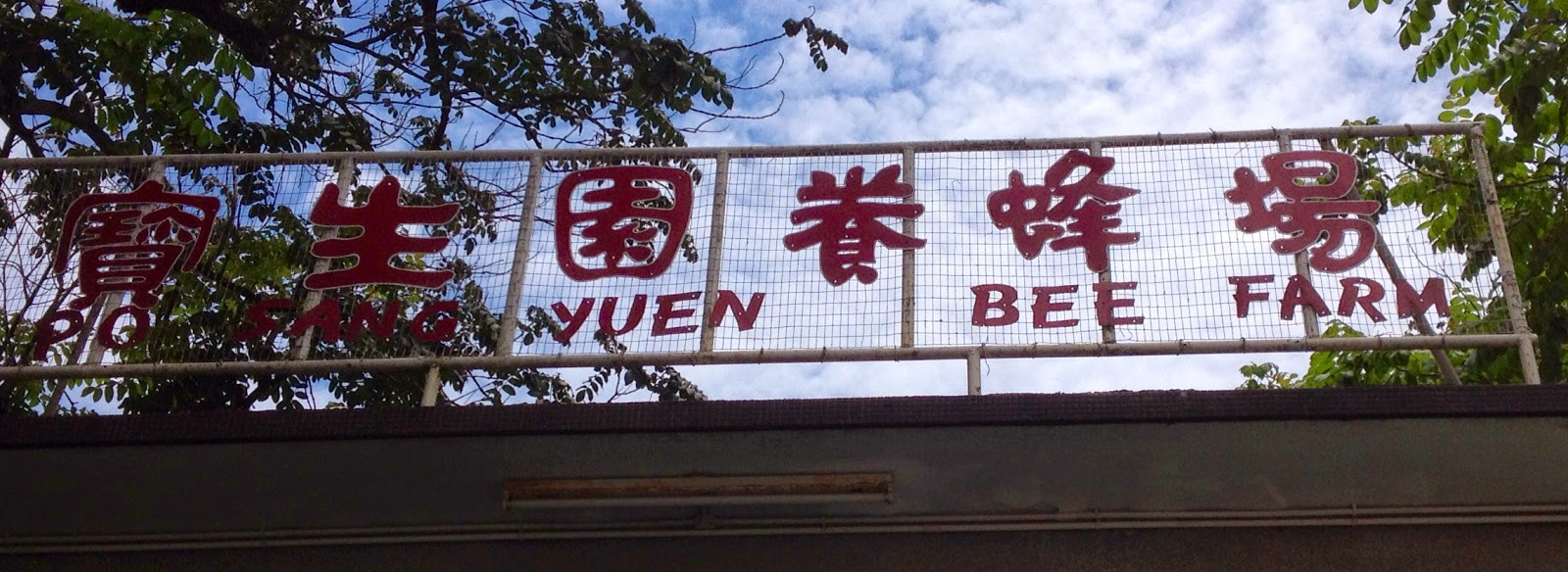When we left Minnesota to come to Hong Kong, we left our two beehives in the capable hands of the
University of Minnesota Bee Squad. Last November we prepared our hives for the arctic Minnesota winter by ensuring they had plenty of stored nectar and pollen, covering them with moisture boards and wax-coated boxes and arranging bales of straw around them to act as a wind break. The Bee Squad did their first check of our hives in March, and unfortunately, had to report that one of our hives did not survive the winter. But our other hive was alive, hungry and happy to see them. Since then we have been getting periodic reports from the Bee Squad about how our hive is doing as spring progresses in Minnesota. With each report, we realize we miss our bees and the anticipation of heading into summer and the honey season. Hearing about our bees back home got us wondering about where and how people keep honey bees in Hong Kong.
 | | |
| Po Sang Yuen Bee Farm |
 |
| Edmund Leung at Po Sang Yuen Bee Farm |
 |
| Asian bees guard a nest in a hollow tree |
Although there is growing interest in keeping honey bees in Hong Kong, the hobby is constrained by space limitations throughout the city. Nevertheless, there are hives
scattered about on rooftops and in some green areas. North of Hong Kong Island is the New
Territories, the largest of Hong Kong's three regions. Space constraints are less of an issue there; the region is home to two bee farms, so we decided to visit one. The
Po Sang Yuen Bee Farm is a short train ride north of Central Hong Kong. After a five minute walk from the train station, we found it and met Edmund Leung who is the General Manager and grandson of the founder. Edmund kindly showed us around and told us about his business. The Bee Farm has over two thousand hives and is in business solely for the production of honey. Their bees are Asian honey bees or
Apis Cerana which are smaller and more docile than the western honey bees (or
Apis Mellifera) that we keep in Minnesota. In addition to their hives in the New Territories, the Bee Farm also has hives scattered around mainland China and in Chiang Mai, Thailand.
 |
| Jars of Buckwheat and Lungan honey |
Placing hives in different locations enables Po Sang Yuen Bee Farm to produce different types of honey because the variety of flowers and trees produce different nectars and pollens. We recognized some of their honey varieties, like Buckwheat, but others, such as Lychee and Lungan were new to us. Po Sang Yuen Bee Farm harvests comb honey from their hives in the New Territories, while honey is extracted and bottled from their hives in mainland China and Chiang Mai.
 |
| Bee hives at Po Sang Yuen Bee Farm |
The honey season in Hong Kong is very different than what we're used to in Minnesota. Because of the relatively mild climate, honey can be harvested a few times per year. But Edmund explained that the biggest harvest is usually in early April. Hives are just one box deep. During the nectar flow, only one super is added to each hive to collect excess honey for harvesting, and it is usually on the hive for about three weeks. Because the climate is so humid in Hong Kong, the nectar would not cure sufficiently to become honey if more supers were stacked on top of the hive. In Minnesota by comparison, our hives are two or three boxes deep, and we might have four or even more supers on our hives for two months or even longer.
 |
| Inside one of the hives at Po Sang Yuen Bee Farm |
Like many bee keepers, Po Sang Yuen Bee Farm has had challenges with their bees. Last year, they lost a significant number of their hives due to unusually cold and wet weather, a problem shared by other bee keepers in Hong Kong. When they lose hives, they try to re-build by dividing the surviving hives and re-queening.
We are grateful for the time that Edmund spent with us to tell us about his bees and his business. We wish him and Po Sang
Yuen Bee Farm much luck and good fortune!
 |
| Founder of Po Sang Yuen Bee Farm |
 |
| Poster at Po Sang Yuen Bee Farm |









No comments:
Post a Comment